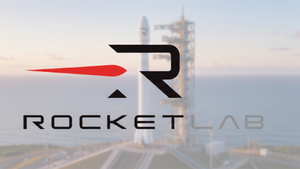Marin Katusa: The switch to solar is happening much faster than you realize

Reprinted from the Katusa’s Investment Insights newsletter
The greatest shortcoming of the human race is our inability to understand the exponential function.
– Harvard physicist Al Bartlett
You’ll never guess why solar power was invented by AT&T back in the mid-‘50s. It was with wildly modest intentions: Powering payphones in remote areas.
The first demonstration of a scrappy, cobbled-together “solar panel” generated just enough power to slowly spin a tiny toy Ferris wheel. No one (not even AT&T) understood the exponential growth potential of this new technology.
But last year, solar panels produced three times the amount of energy used by the entire U.S. back when that Ferris wheel was spinning. Because solar has a single secret superpower no other major source of energy has.
Energy sources like coal or natural gas have a fixed cost of extraction. So even as the amount drilled for or mined rises by orders of magnitude, their prices stay roughly the same — over centuries.
But solar cells are manufactured, not extracted. That means solar becomes much cheaper with every successive cell manufactured — and 70 billion solar cells were manufactured last year.
So from 1985-2025, while coal was going nowhere, the price of solar fell off a cliff. The graph below shows the last 45 years of cumulative GW of production vs price, on a log scale.

Nothing but solar is capable of this kind of ongoing price decrease. Which is why, within a decade, the single biggest source of electrical power on planet Earth will be solar. And that switch is happening much, much faster than even the “experts” are predicting.
Everyone is wrong about solar
For the last quarter-century, some of the most reputable organizations in the world have wildly underestimated solar power growth predictions. For example, the International Energy Agency (IEA) publishes predictions about solar’s growth in its annual World Energy Outlook report. In its 2009 report, the IEA predicted that by 2029, installed solar capacity would increase 10x, to 244 GW.
It hit that milestone in just six years and has nearly grown 10 times — again — from there. For much of the 2010s, solar deployment beat the IEA’s five-year forecasts by 200%+. They constantly revise their forecast upward to try to keep pace with reality:
- In 2021, they said 2023 would bring 218GW of installation.
- In 2022, they said 257GW. In 2023, they said 406GW.
BNEF, a Bloomberg subsidiary, tried the same. But the reality was that 447GW were deployed—more than twice their original predictions. And it made exactly the same mistake in 2024.
The trouble with solar predictions is that no one has learned the lesson from the last 70 years of solar. The experts are still assuming linear growth. But solar is growing exponentially.
From that first Ferris wheel, through the ‘80s and ‘90s and early ’00s, it looked like solar was barely moving. Now all at once — this year — solar is becoming the global standard for electricity generation.
Solar growth at the speed of light
To understand where solar is actually headed, take past reality and work forward from there. Here’s how rapidly solar deployment has grown—for the past two decades:
- In 2004, it took one year to install 1 GW of solar power.
- In 2010, it took one month.
- In 2016, it took one week.
- In 2024, it took about 12 hours. That’s the equivalent of 3.4 football fields of solar installed every minute.
Here’s what that looks like over the past 15 years. Note that the y-axis in the chart below is exponential—and solar is breaking out above that trendline.

At the current growth rate, solar capacity is doubling about every three years — or growing 10x every decade. According to ISES, solar power will surpass nuclear generation in 2026, wind in 2027 dams in 2028, gas in 2030 and coal in 2032.
And in just 25 years, solar capacity will exceed 75TW — or 6x the world’s current electricity generating capacity. That will make solar humankind’s largest source of primary energy — not just electricity. Which means we’re closer to AT&T’s Ferris wheel in terms of total solar deployment than we are to what’s coming.
Almost all the demand for solar panels still lies in the future.
– The Economist
Exponential growth is difficult to see at first—until suddenly, it looks like it was inevitable. It’s not often the future is this easy to predict. Fortunately, it’s also not difficult to profit from an exponentially growing technology. You just have to recognize the opportunity.
We’ve already done the legwork for you and identified a company that is capitalizing on the massive solar growth in the United States. And we’re going to show you how they’re on the verge of hitting their “Netflix Moment.”
More from Marin Katusa: Lithium’s math problem
More News
View More




Recent Quotes
View MoreQuotes delayed at least 20 minutes.
By accessing this page, you agree to the Privacy Policy and Terms Of Service.